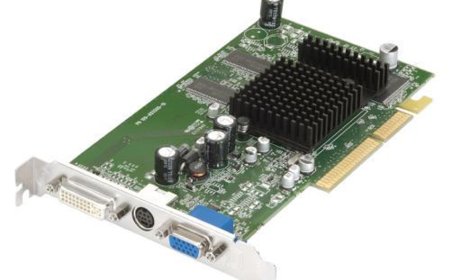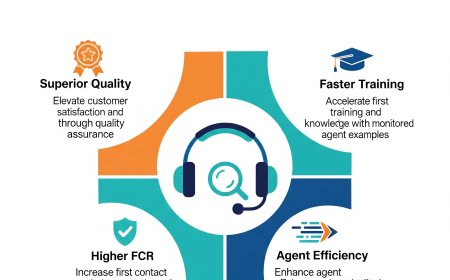Chronic Conditions Requiring Neuropathic Pain Therapy
Chronic Conditions Requiring Neuropathic Pain Therapy: Discover how conditions like diabetes, sciatica, and shingles are managed with targeted pain treatments.

Neuropathic pain is a complex and often debilitating condition that affects millions of people worldwide. Unlike regular pain that signals injury or damage, neuropathic pain occurs when the nervous system itself becomes damaged or malfunctions. This type of pain can be challenging to manage and significantly impact quality of life.
Understanding chronic conditions that require neuropathic pain therapy is crucial for both patients and healthcare providers. This comprehensive guide explores the various aspects of neuropathic pain and treatment options including pregabalin tablets , helping you navigate this complex medical landscape with confidence.
What is Neuropathic Pain?
Neuropathic pain develops when nerves in the central or peripheral nervous system become damaged or diseased. Unlike nociceptive pain (which warns us of potential harm), neuropathic pain serves no protective purpose and can persist long after the initial injury has healed.
Common characteristics of neuropathic pain include:
- Burning, shooting, or stabbing sensations
- Tingling or numbness
- Hypersensitivity to touch or temperature
- Pain that worsens at night
- Difficulty describing the exact location of pain
Common Chronic Conditions Requiring Neuropathic Pain Treatments
1. Diabetic Neuropathy
Diabetes is one of the leading causes of neuropathic pain. High blood sugar levels can damage nerves throughout the body, particularly in the feet and hands. Diabetic neuropathy affects up to 50% of people with diabetes and requires specialized neuropathic pain therapy.
2. Post-Herpetic Neuralgia
This condition occurs after a shingles infection, where damaged nerves continue to send pain signals even after the rash has healed. The pain can persist for months or years, making neuropathic pain relief essential for patient comfort.
3. Trigeminal Neuralgia
Often called the "suicide disease" due to its intensity, trigeminal neuralgia causes severe facial pain. This condition requires immediate and effective neuropathic pain and treatment approaches.
4. Fibromyalgia
While not purely neuropathic, fibromyalgia involves altered pain processing in the nervous system. Many patients benefit from neuropathic pain treatments as part of their comprehensive care plan.
5. Spinal Cord Injuries
Damage to the spinal cord can result in chronic neuropathic pain below the level of injury. This condition often requires long-term neuropathic pain therapy for optimal management.
6. Chemotherapy-Induced Neuropathy
Cancer treatments can damage peripheral nerves, leading to painful neuropathy. Early intervention with appropriate neuropathic pain relief strategies is crucial for maintaining quality of life during treatment.
Neuropathic Pain Treatments: A Comprehensive Approach
Medication Management
Pregabalin Tablet Used for Neuropathic Pain
Pregabalin is one of the most commonly prescribed medications for neuropathic pain. This anticonvulsant works by reducing the release of neurotransmitters that carry pain signals. Key benefits include:
- Effective for various types of neuropathic pain
- Available in multiple dosage forms
- Proven track record in clinical trials
- Can improve sleep quality
Other Medications
- Gabapentin: Similar mechanism to pregabalin
- Tricyclic antidepressants: Amitriptyline and nortriptyline
- Anticonvulsants: Carbamazepine for trigeminal neuralgia
- Topical treatments: Lidocaine patches and capsaicin cream
Non-Pharmacological Approaches
Physical Therapy
Specialized exercises and techniques can help manage neuropathic pain by:
- Improving circulation
- Maintaining muscle strength
- Enhancing flexibility
- Promoting nerve regeneration
Psychological Support
Chronic pain affects mental health, making psychological interventions crucial:
- Cognitive behavioral therapy
- Stress management techniques
- Support groups
- Mindfulness and meditation
Advanced Interventions
- Nerve blocks: Targeted injections to interrupt pain signals
- Spinal cord stimulation: Electronic devices that modify pain perception
- Transcutaneous electrical nerve stimulation (TENS): Non-invasive pain relief
Neuropathic Pain Relief Strategies
Lifestyle Modifications
- Regular exercise: Low-impact activities like swimming or walking
- Healthy diet: Anti-inflammatory foods and blood sugar control
- Sleep hygiene: Consistent sleep schedule and comfortable environment
- Stress management: Relaxation techniques and hobby engagement
Home Remedies and Complementary Approaches
- Hot and cold therapy: Alternating temperatures for pain relief
- Acupuncture: Traditional Chinese medicine approach
- Massage therapy: Gentle techniques to improve circulation
- Herbal supplements: Under medical supervision only
Precautions and Safety Considerations
Medication Safety
When considering neuropathic pain treatments, especially medications like pregabalin tablet used for pain management, important precautions include:
- Dosage compliance: Take medications exactly as prescribed
- Drug interactions: Inform healthcare providers of all medications
- Side effects monitoring: Watch for dizziness, drowsiness, or mood changes
- Gradual discontinuation: Never stop medications abruptly
- Regular monitoring: Schedule follow-up appointments as recommended
Lifestyle Precautions
- Avoid alcohol: Can worsen neuropathic pain and interact with medications
- Protect affected areas: Prevent further nerve damage
- Monitor blood sugar: Especially important for diabetic patients
- Maintain safe environment: Reduce fall risks due to medication side effects
When to Seek Immediate Medical Attention
- Sudden worsening of pain
- New neurological symptoms
- Severe medication side effects
- Signs of infection in affected areas
- Thoughts of self-harm due to pain
Creating an Effective Treatment Plan
Working with Healthcare Providers
Successful neuropathic pain and treatment requires collaboration between patients and healthcare teams:
- Honest communication: Describe pain characteristics accurately
- Goal setting: Establish realistic treatment objectives
- Regular monitoring: Track progress and adjust treatments
- Multidisciplinary approach: Involve specialists as needed
Monitoring Progress
- Pain diaries: Record pain levels and triggers
- Functional assessments: Monitor daily activity levels
- Quality of life measures: Evaluate overall well-being
- Side effect tracking: Note any adverse reactions
Living with Neuropathic Pain: Tips for Success
Building a Support Network
- Connect with family and friends who understand your condition
- Join support groups for people with chronic pain
- Consider counseling or therapy for emotional support
- Communicate openly with healthcare providers
Maintaining Hope and Motivation
- Set small, achievable daily goals
- Celebrate progress, no matter how small
- Stay informed about new treatment options
- Focus on activities that bring joy and meaning
Planning for the Future
- Discuss long-term treatment goals with your healthcare team
- Consider workplace accommodations if needed
- Plan for potential changes in your condition
- Maintain regular medical follow-ups.
Frequently Asked Questions (FAQs)
Q1: How long does neuropathic pain therapy take to work?
A: The timeline for neuropathic pain relief varies depending on the treatment approach. Medications like pregabalin may show initial effects within 1-2 weeks, but optimal pain control often takes 4-8 weeks. Non-pharmacological approaches may require several months of consistent application.
Q2: Is neuropathic pain curable?
A: While neuropathic pain is often chronic and may not be completely curable, it is highly manageable with appropriate neuropathic pain treatments. Many patients achieve significant pain reduction and improved quality of life with comprehensive treatment plans.
Q3: Can neuropathic pain get worse over time?
A: The progression of neuropathic pain varies by underlying condition. Some conditions like diabetic neuropathy may worsen without proper blood sugar control, while others may stabilize with appropriate treatment. Early intervention with neuropathic pain therapy is crucial for preventing progression.
Q4: Are there natural alternatives to prescription medications?
A: While natural approaches can complement medical treatment, they should not replace prescribed neuropathic pain and treatment protocols. Options like acupuncture, meditation, and certain supplements may provide additional relief when used alongside medical treatments.
Q5: What should I do if my current treatment isn't working?
A: If your current neuropathic pain relief strategy isn't effective, consult your healthcare provider. They may adjust dosages, switch medications, or recommend combination therapies. Never modify treatment plans without professional guidance.





















































